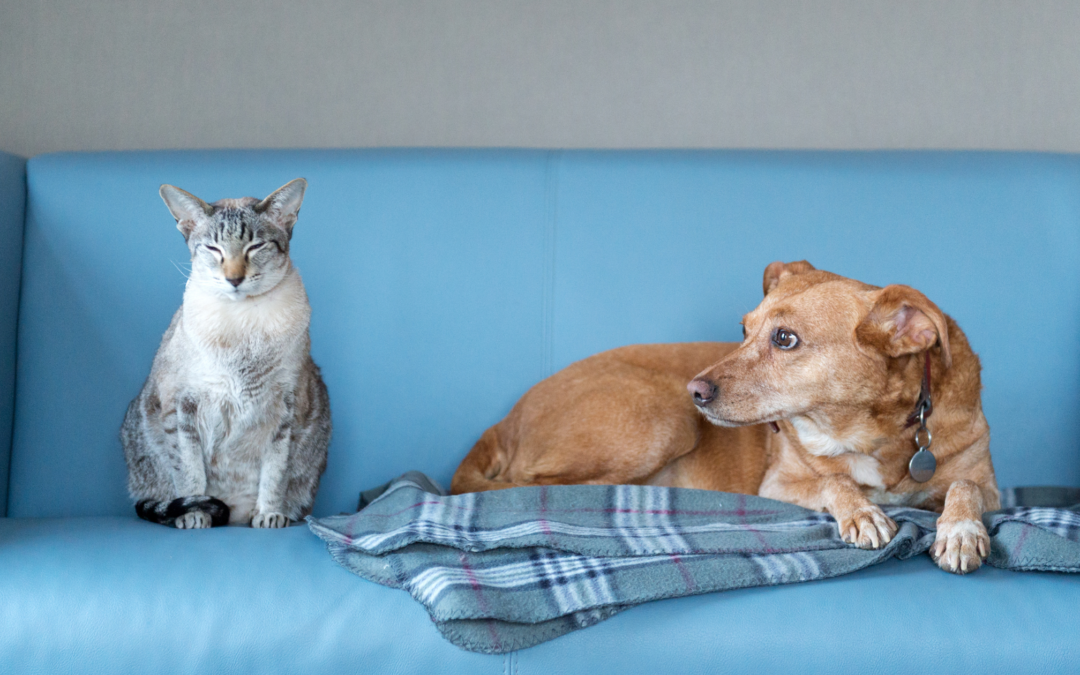Introducing an additional pet to your home?
Adding a new pet to your home can be so exciting! A new pet could become the perfect playmate and companion for your current pets, but it is important to remember that the transition may be stressful for everyone.
You can’t sit your current pet down and explain that they are getting a new brother or sister and then bring in a new pet and expect them to be instant BFFs. Similarly, your new pet will be coming into a brand new environment where they don’t know you or your current pet or any of the routines of your home yet. This will be a transition for everyone, so it is important to ease into it.
By following these steps, you can help the transition go smoothly and safely. As always, if you see concerning behaviors, please contact an animal behavior specialist or trainer for guidance.
Introducing a new cat to your current cat
When introducing a new cat to the home, create a separate and enclosed space for the cat to stay at first. If you can, bring home towels or blankets from the shelter that have their smell to create a safe environment. Allow them to relax for a few days without new stimuli such as new visitors or animals.
After the cat adjusts a little, begin by introducing used blankets and towels for each cat to smell and become familiar with. You can begin to expand the new cat’s space, but keep the pets separated. When the time comes for the face-to-face interaction, separate the cats by a baby gate or door. Watch carefully for signs of stress and agitation. Before trying this step, be sure to learn about pet body language so you can better assess how each pet is feeling about the interaction.
Be patient as the first introduction may not go as you hope. Your pets may take some time to warm up to one another. Keep up the careful, monitored interactions until they become comfortable together.
Introducing a new dog to your current dog
If you adopt a dog from Paws4ever to be a companion to a current dog, the staff will facilitate the initial interaction. Typically, the dogs will meet on leash, walking parallel to each other to allow the dogs smell and see each other from a distance. When they meet, we try to prevent nose-to-nose greetings and watch their body language carefully. Then if things are going well, they may have off-leash interactions in an enclosed area. All parties continue to watch the dogs closely for signs of stress and frustration.
Good dog play and interaction include: a relaxed open mouth, play bows, taking breaks, and taking turns. Warning signs include stiffness, staring, lip-licking, certain types of vocalizations, lunging, and raised hair. All of these need to be considered in context and depend on the dog. Before beginning this process, it will be helpful to learn about dog body language.
After adoption, take your dogs on a walk together and bring them in the home afterwards. Keep a close eye on them until you know they can go unsupervised safely. Remove sources of conflict such as food, toys, beds, or other resources they may decide to guard. Give the dogs breaks to prevent frustration, especially when bringing home a new puppy. Praise them with treats when they do behaviors you want to see. When in doubt, separate them and contact an animal trainer or behavior specialist.
Introducing cats and dogs
Can cats and dogs get along? Not always, but with the right introduction, oftentimes they can! The key is slow and steady desensitization. Watch their body language closely during all parts of the process.
When introducing a cat and dog, generally follow the steps described above for cat-to-cat introductions. Have their first true interaction through a solid barrier such as a closed door where they cannot see each other but they can smell each other. Then, allow them to see each other at a distance. If this is the first time your dog has interacted with a cat, teach them to focus on you rather than on the cat. Praise and reward them for positive behaviors. Watch for prey drive behaviors such as being hyper-focused, stiff, glaring or intensely staring.
Do many short sessions on leash until the dog reliably does not react to the cat.
Need a trainer to help your dog adjust to a new pet?
Check out Paws4ever’s Dog Training Program. Our professional trainers use humane and effective positive reinforcement. We offer a variety of fun and friendly group classes as well as private lessons and even consultations by phone and video chat.

